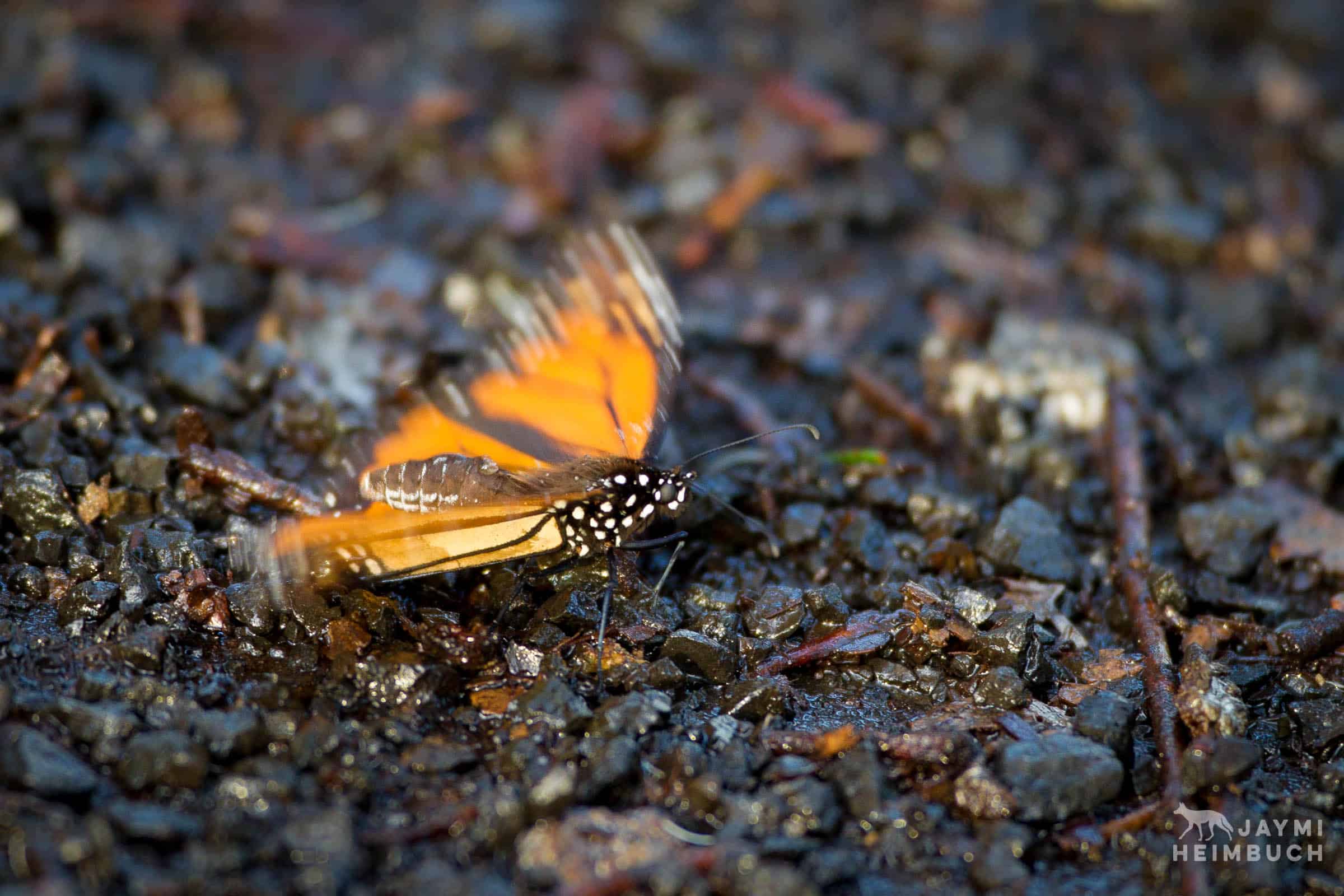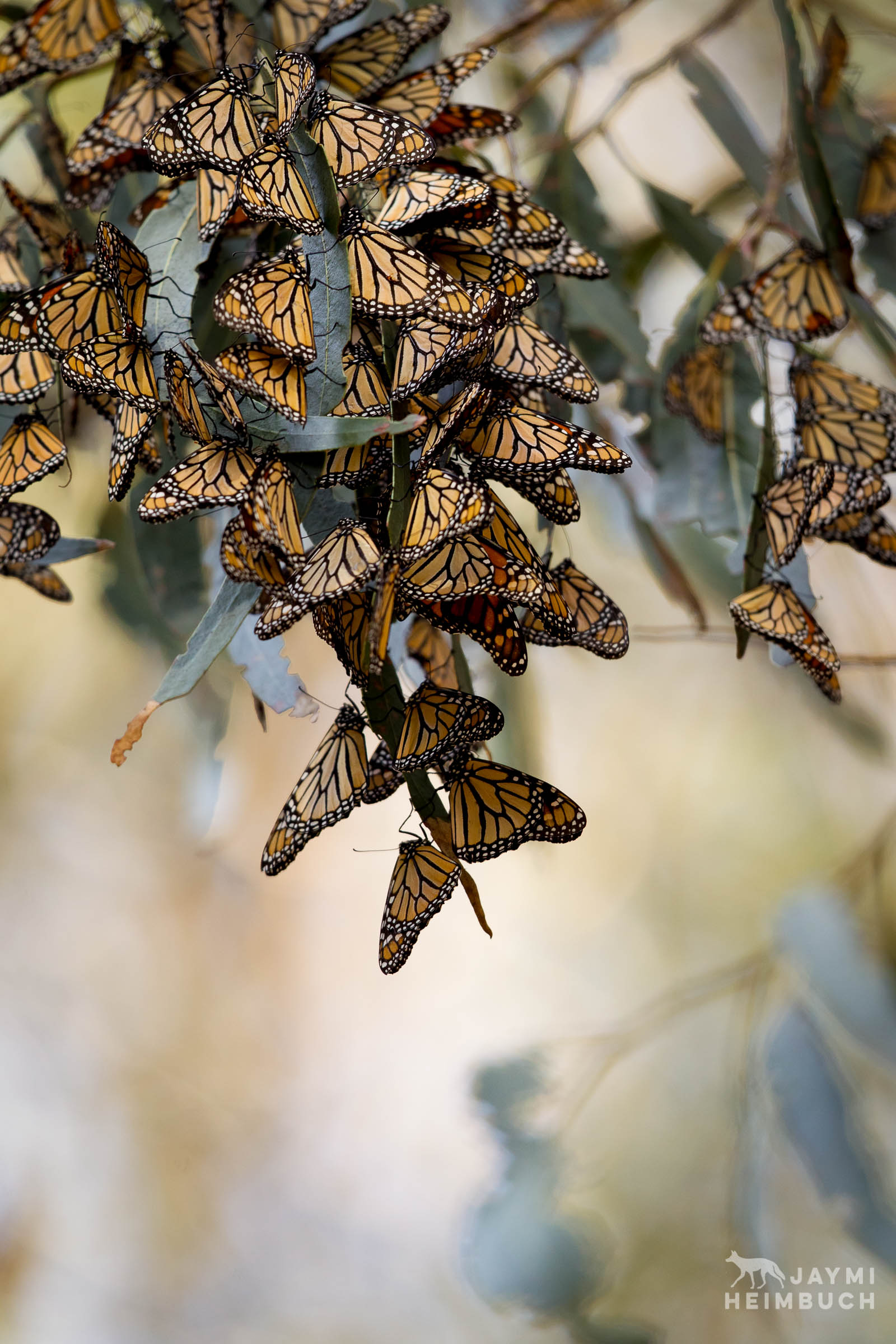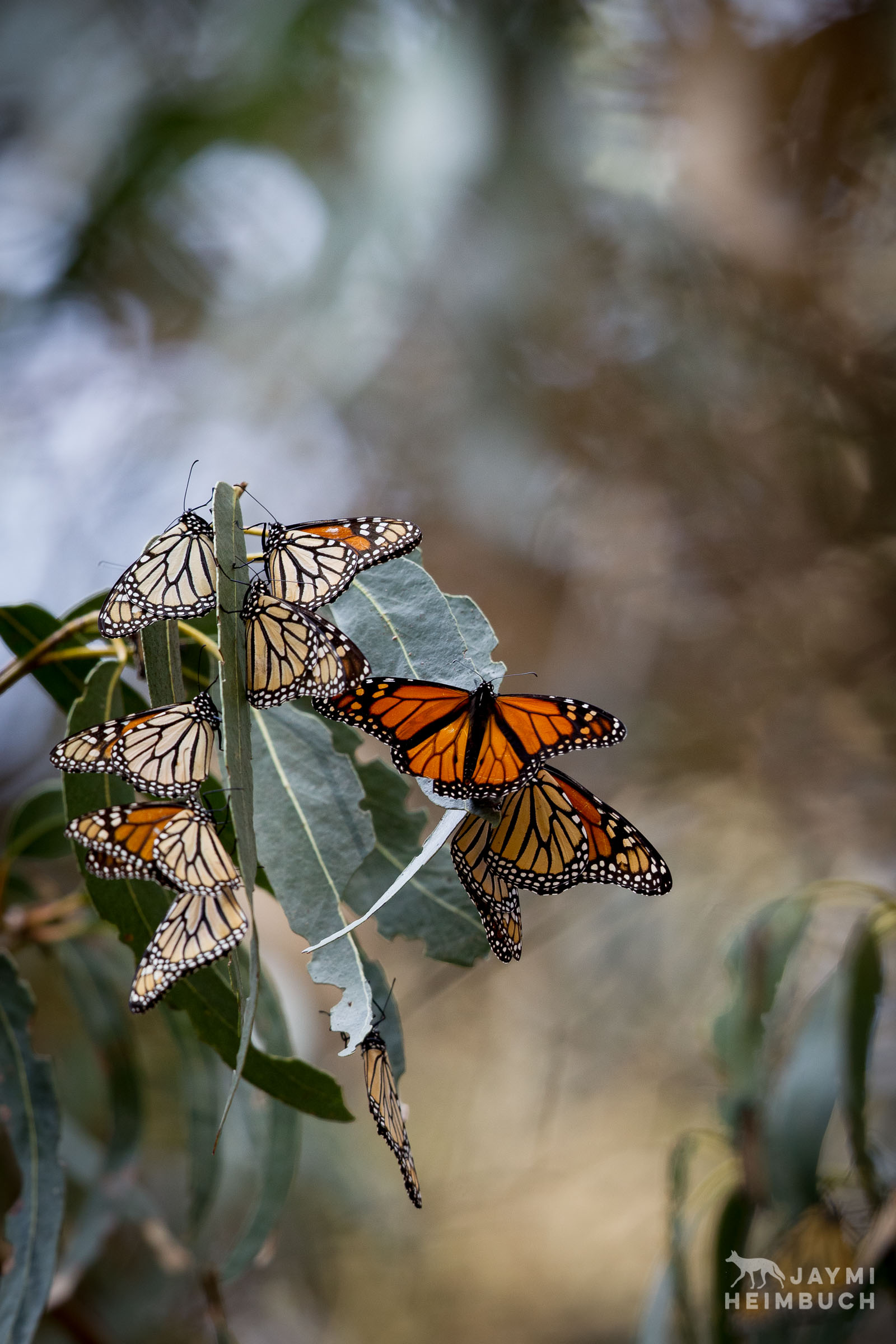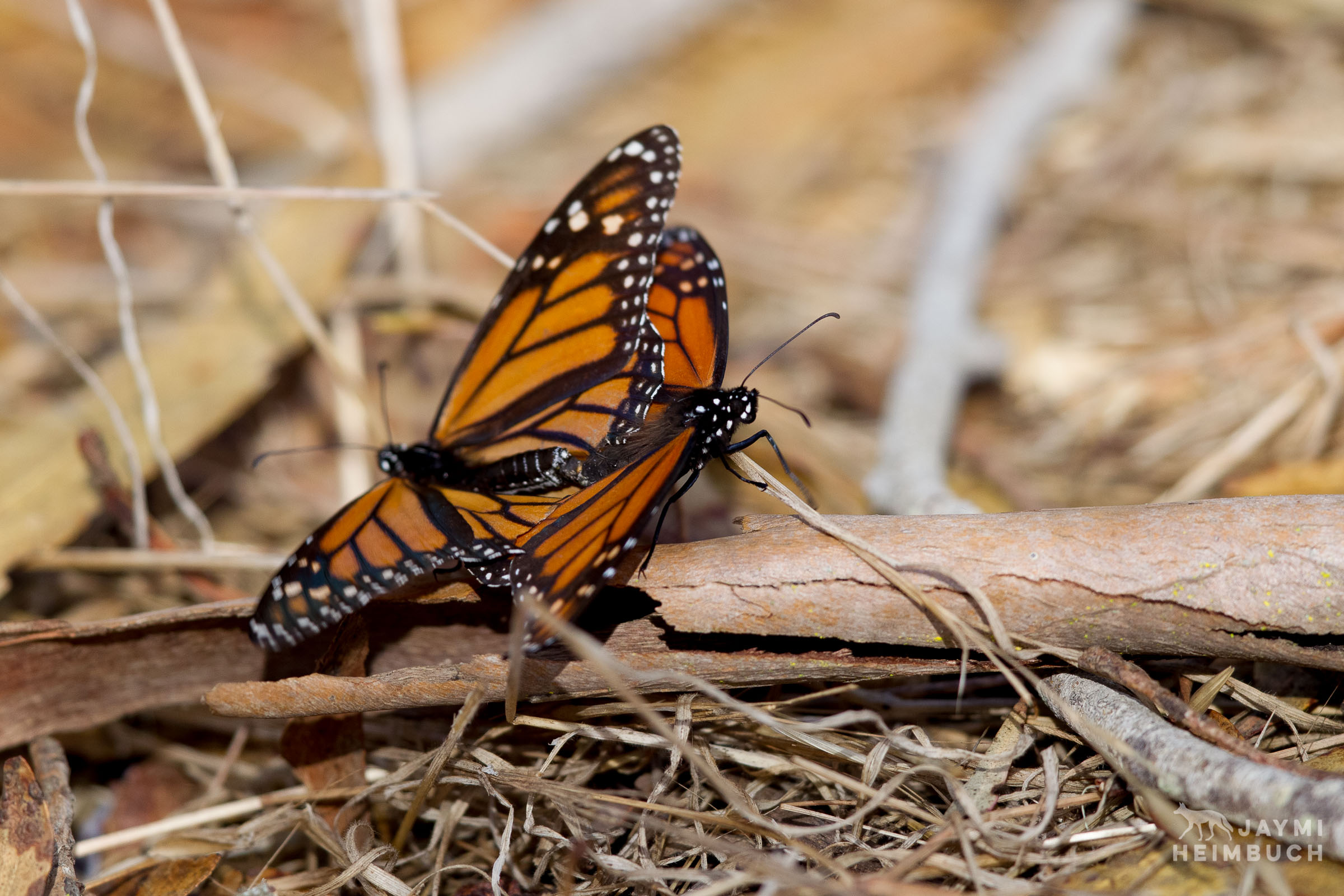The Epic Flight And Worrying Plight Of Monarch Butterflies
[mashshare]
It is an amazing experience to look up into what should be an evergreen only to find its branches covered in brown leaves. Then you realize, each of those brown leaves is actually a monarch butterfly. And just as you realize this, a beam of warm morning sunlight shifts onto the bows, orange and black wings open, flex, and then suddenly hundreds of butterflies take flight like a long, colorful sigh.
This is an experience visitors to the Pismo Beach Monarch Butterfly Grove enjoy every winter, and visitors to monarch groves throughout California and Mexico. People arrive in droves for the annual spectacle of over-wintering monarchs, one stage in the multi-generation migration that happens each year.
The butterflies know to return to the exact same groves, even the exact same trees, that their great grandparents sheltered in the year before. Yes, great-grandparents. The single annual migration takes four generations of butterflies to complete. Exactly how the butterflies make their way back to the same locations is still a mystery to scientists. Humans trek to the locations every year as well, to witness the arrival of these beautiful creatures, to stand among them, looking up and seeing the trees and sky filled with flitting color.
The annual arrival of monarchs may be a scene perhaps only one or two more generations of people will witness. The U.S. Fish and Wildlife Service is now considering the species for inclusion on the Endangered Species List.

When pondering butterflies, there are usually two words that come to mind: beautiful and fragile. But for the monarch there needs to be a third word: epic.
The overused word is actually deserved when it comes to this species, which partakes in a 3,000 mile migration every year that requires four full generations of butterflies to complete. Monarch butterflies are the only insect species to travel thousands of miles from the cooler north to the warmth of southern regions where they overwinter, returning to the same groves of trees for months at a time before taking flight back up north to start the cycle again.
Each spring, monarchs that have sheltered in California and Mexico move north, finding milkweed on which to feed and lay eggs. Milkweed is essential to the survival of monarch butterflies. When the eggs hatch, the caterpillar feeds exclusively on milkweed for about two weeks until it is ready to weave a cocoon and begin its transformation into a butterfly. The milkweed not only sustains the species but also protects it. By eating the plant, the caterpillar becomes toxic to predators like birds, which will avoid eating the caterpillars and the adult butterflies. Indeed, the strategy is so effective, another species, the viceroy butterfly, has evolved to mimic the monarch in appearance to protect itself from predators.
About 10 days after weaving a cocoon, the newly transformed butterfly emerges and continues north as the first generation of the year’s migration. This generation then lay eggs that hatch into the second generation of monarchs, which emerge in the early summer months of May and June, and which in turn lay the eggs that will hatch into the third generation during the height of summer in July and August.

These first three generations of butterflies live only from a few weeks to two months. But the fourth generation, the generation born in September and October, will live as long as six or eight months because it is the generation that makes the miraculous return to the same groves, the same trees even, to ensure the species survives the winter.
Let’s take a moment to let the mystery of how monarchs return to the same locations every year fully sink in. Many animals return to the same location after a long time away. Sea turtles will return to the same beach where they were born even after years of being at sea. Laysan albatross will return to the same location, sometimes within feet of the nest cup in which they were born, five or more years after fledging. But these animals were born in that spot, and had a chance to imprint on it, to somehow memorize the magnetic field and thus the coordinates to which they will return later. Monarch butterflies, on the other hand, don’t have this advantage. They some how know to continue on the migration’s path despite never having visited the place to which they are traveling. They are removed from it by several generations. Yet they know. Theories exist but no one understands for sure how they manage it.
When the monarch butterflies arrive in their wintering groves, they cover branches of trees in great clumps. The Pismo Beach Monarch Butterfly Grove explains, “The butterflies form dense clusters with each one hanging with its wing down over the one below it to form a shingle effect. This provides shelter from the rain and warmth for the group. The weight of the cluster help keeps it from whipping in the wind and dislodging the butterflies… There are no definitive answers to the question of why they [form clusters]; they could either all be attracted to the same conditions that exist in a particular spot, or they could benefit from being a group. Possible benefits they could gain from being together include protecting themselves from the elements and/or overwhelming predators.”
The two specific needs for monarch butterflies — milkweed and familiar forests — are the reason why the species may be making the unfortunate change in status from near-threatened to endangered.


Because monarchs take refuge in specific groves, they are vulnerable to legal and illegal logging. Not only does logging eliminate the trees where the butterflies prefer to rest but the loss of trees surrounding their preferred groves exposes them to cooler temperatures which can kill them. Meanwhile, monarchs searching for milkweed during summer on which to lay their eggs are having a harder time finding it due to the expansion of farmland and use of herbicides to kill off the plant. The loss of milkweed means the loss of the only food source for monarch caterpillars.
The combination of threats is taking a serious toll. Though there has been an uptick in the number of sanctuaries in California and Mexico to protect overwintering monarchs, there is still the looming problem of our industrial farming practices.
In September of 2013, the Associated Press reported, “A new study of the Monarch butterflies’ winter nesting grounds in central Mexico says small-scale logging is worse than previously thought and may be contributing to threats facing the Monarch’s singular migration pattern. The reserve’s 33,482-acre core zone lost 41 acres of pine and fir trees so far in 2013, about half of that because of illegal logging… The Monarch migration is under serious threat. A report in March said the number of butterflies making it to Mexico this year had dropped 59 percent, the lowest level since comparable record-keeping began 20 years ago. It was the third straight year of declines for the orange-and-black butterflies. Six of the last seven years have shown drops, and there are now only one-fifteenth as many butterflies as there were in 1997.”
However, SciDev.net reported in November of 2014, “Illegal logging in Mexican forests, where the monarchs hibernate during winter, has traditionally been to blame. But large-scale logging by companies appears to have been halted. And now small-scale logging by local people for firewood and timber — a ‘growing concern in 2013’ — has also stopped, according to a study published last month (27 October) in Biological Conservation.”

Even with this mildly good news that logging has decreased, there’s still the problem of the sheer scale of farming in the U.S. and the practices used to grow mile after mile of monocrops. Changing how we grow food is a lot harder than ending illegal logging practices, both politically and economically. It is, after all, a question of what goes on our dinner plates and at what price.
National Geographic reported, “Milkweed is the only plant on which monarch butterflies will lay their eggs, and it is the primary food source for monarch caterpillars. Despite its necessity to the species, the plant decreased 21 percent in the United States between 1995 and 2013.” The decrease is primarily due to the use of GMO “Round-Up Ready” crops that can survive being sprayed with herbicides which kill off milkweed and other plant species.
If the monarch butterfly makes it to the endangered species list, the species will receive federal protections. If that happens, it could mean not only the survival of the species but also a potential change in how we view farming, perhaps leading to a more universal recognition of the ecological impact of our practices and a shift to methods that bolster biodiversity rather than encourage monocrops to the demise of plant and animal species.
The timing for the USFWS considering the monarch butterfly for inclusion on the endangered species list couldn’t be more critical.
Reuters recently reported both good and bad news for monarch butterflies. The bad news is that new estimates from the Xerces Society for Invertebrate Conservation show that monarch populations have dropped by as much as 90 percent in the last 20 years. “An estimated 1 billion monarchs migrated to Mexico in 1996 compared with just 35 million last year, according to Marcus Kronforst, a University of Chicago ecologist who has studied monarchs.”
The Center for Biological Diversity, the Center for Food Safety, the Xerces Society for Invertebrate Conservation and Dr. Lincoln Brower have together filed a petition requesting federal protections for the species. The monarch has no legal protection in the United States, but after about a review process that lasts about a year — or four generations of monarchs — that could change.
The USFWS website states that the service’s first steps in the review process to see if a change in status is warranted is to begin a 60-day public information period during which data will be gathered, including:
- The subspecies’ biology, range and population trends, habitat requirements, genetics and taxonomy;
- Historical and current range, including distribution patterns;
- Historical and current population levels and current and projected trends;
- The life history or behavior of the monarch butterfly that has not yet been documented;
- Thermo-tolerance range and microclimate requirements of the monarch butterfly;
- Past and ongoing conservation measures for the subspecies, its habitat or both; and,
- Factors that are the basis for making a listing determination under section 4(a) of the ESA;
If you have information about monarch butterflies that you think could benefit the USFWS in making a decision, send it in before March 2, 2015. The site states, “To view the notice and submit information, visit www.regulations.gov docket number FWS-R3-ES-2014-0056.”
With luck, and plenty of help, the species may continue on so that one day, we might uncover the mystery as to how a butterfly can find the same tree that its great grandparent rested in the previous year.
If monarch butterflies are in your area, you can support now them by growing milkweed plants in your garden. Monarch Joint Venture provides information about where to get seeds and how to grow the plants.
You can also help monarch butterflies by making a donation to support one of the several sanctuaries set up for them in California and Mexico which help ensure the butterflies have somewhere safe to overwinter before beginning their incredible journey north again.
Originally published January 2015

